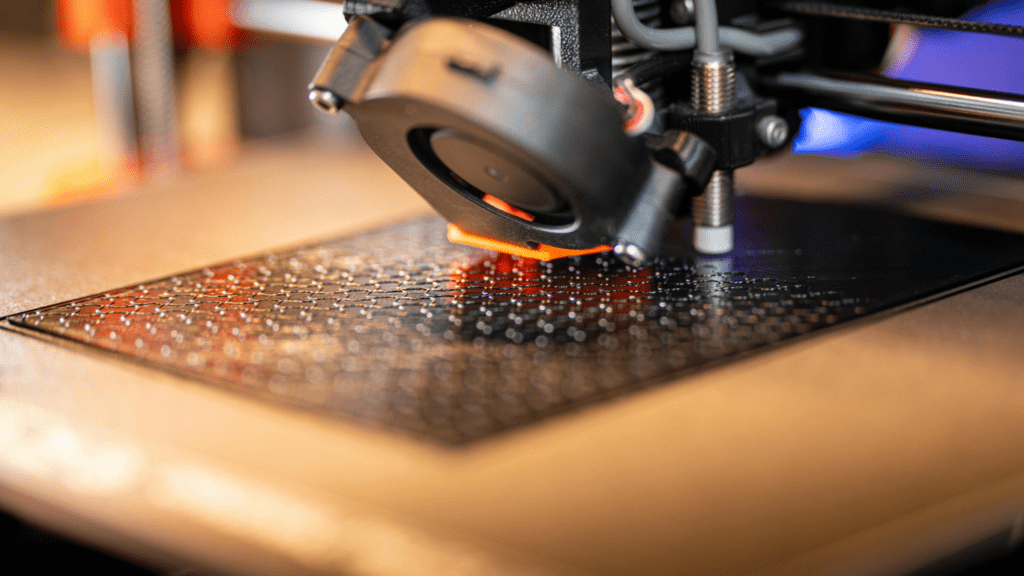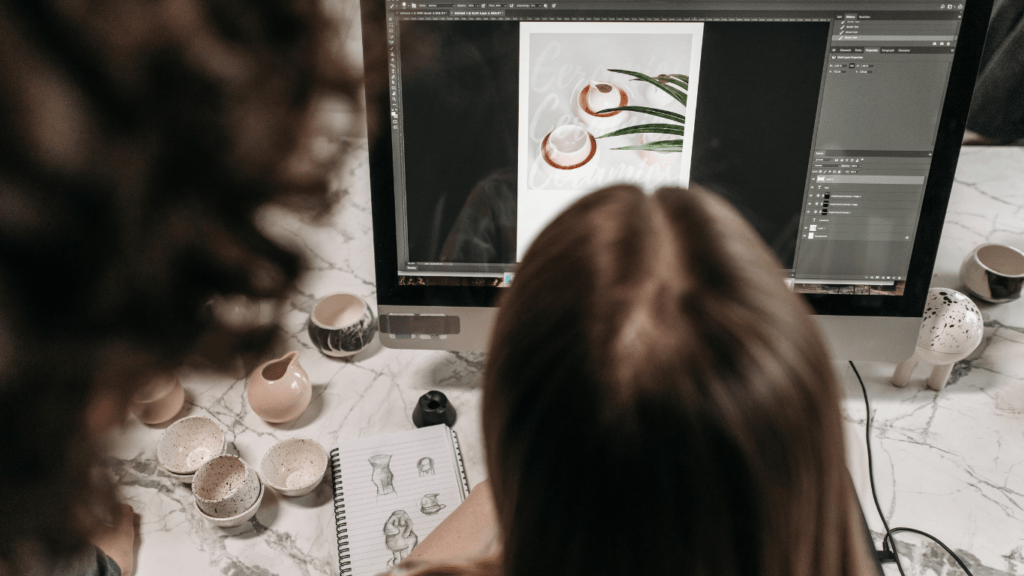Unveiling Digital Art Career
Stepping into the vibrant world of digital art? You’re in for a thrilling ride! This realm isn’t just about creating stunning visuals—it’s about storytelling, innovation, and pushing the boundaries of creativity. But how do you navigate your way to success in this ever-evolving field?

The Rise of Digital Art
Stepping into the next segment of our journey, it’s essential to acknowledge the shared context set by the seismic shift within our world brought about by digital art.
Evolution and Impact
Fostering the understanding of digital art’s growth requires a step back in time, revisiting the origins of this revolution. The first brushes with this art form materialized around the 1980s, coinciding with the birth of graphical user interfaces and the quickly expanding palette of computer programs. Since then, digital art has evolved at an unyielding pace, mirroring our own rapidly advancing technological age.
From these humble beginnings, the consequences of this new art movement became abundantly clear. Art, now unbound by physical limits, ushered in an era of unlimited exploration and expression. With just a few clicks, artists could sculpt breathtaking landscapes or craft minimalist masterpieces. In other words, digital art unlocked a Pandora’s box of creative possibilities, allowing artists to venture into territories limited only by their imaginations. Consider, for instance, over 14.58 million people viewing Beeple’s digital artwork sell for 69 million dollars; it’s evident that the impact is powerful and pervasive.
Key Influences in Digital Mediums
A multitude of factors shape the unique character of digital art, acting as its guiding North Star. One of those key influences today is social media. Channels such as Instagram and Behance have become hotbeds for talented creators to showcase their digital portfolios. The shared wisdom within these communities often leads to the birth of new styles and techniques, encouraging continuous growth.
Another significant influence is the hardware and software tools available to artists. Platforms like Procreate, Adobe Creative Cloud, or Blender equip artists with a comprehensive suite to turn imaginative concepts into pixel-perfect portraits. Furthermore, drawing tablets and styluses renders the artist’s touch even more nuanced.
Exploring Career Options in Digital Art
From its integration with modern technology to the influence of social media and the rise of NFTs, digital art’s landscape is constantly evolving. It’s turning into a promising field offering a plethora of job options. Here, let’s delve into the nitty-gritty of three prominent career paths in digital art: Illustrator, 3D Modeler, and Concept artist.

Illustration
Illustrators breathe life into concepts with their art. They’re responsible for creating visual conceptualizations of ideas across a variety of digital platforms. For instance, children’s books, graphic novels, and comic strips all warrant illustrative work. With advancements in technology, an array of digital tools at their disposal, such as Adobe Illustrator, and Procreate, they’re equipped to create meticulous and intricate designs.

3D Modeler
3D Modelers, another profound career in digital art, sculpt and manipulate virtual objects in three-dimensional space. They build realistic, detailed 3D models for diverse sectors, from video games to architectural firms. A 3D modeler uses sophisticated software like AutoCAD and 3ds Max to turn concepts into 3D visualizations. Take Pixar Studios – its iconic characters from Toy Story and Finding Nemo are examples of meticulous 3D modeling work.

Concept Artist
In the realm of digital art, concept artists stand at the inception point of creative projects. They provide a visual representation of an idea before it’s fully developed. This role is particularly crucial in the gaming industry, where a concept artist sketches the initial character designs, backgrounds, and props. They use software platforms like Photoshop for designing, paving the path for subsequent development phases.
Essential Skills for Aspiring Digital Artists
This section of the blog post will delve deep into the crucial skills necessary for anyone aiming to pursue a digital art career.
Technical Skills
Acquiring some technical competencies serve as a fundamental pillar for becoming a successful digital artist. Mastering digital art tools, platforms, and software is not an option, it’s a must. Software such as Adobe Illustrator, Photoshop, and 3D rendering programs like Blender or AutoCAD does enrich an artist’s toolkit.
For example, an Illustrator may often lean on Adobe Illustrator for vector artistry. Artists dedicated to 3D modeling could find Autodesk’s Maya or Blender immensely beneficial. Each digital art program offers different features and, understanding how to best utilize these features can singlehandedly elevate the quality and efficiency of an artist’s performance.
Another valuable technical skill is the knowledge of coding languages, primarily HTML and CSS. These skills add immense value, especially when the art gets interactive or incorporated into a website or application.
Data drawn from authoritative sources like LinkedIn and Monster job postings show that understanding software operations and coding knowledge are frequently listed requirements for digital art positions.
| Technical Skill | Detail | Importance |
| Software Operation | Adobe Illustrator, Photoshop, Blender, AutoCAD etc. | High |
| Coding Knowledge | HTML, CSS etc. | Medium |
Creative Thinking and Artistic Vision
On the other side of the coin from technical skills lies another vital component to digital artistry – Creative Thinking and Artistic Vision. Creative thinking involves problem-solving, innovative ideas, and lateral thinking. These aptitudes enable artists to create unique work distinguishing their style from others.
Artistic vision ties hand in hand with creative thinking; it’s the artist’s unique perspective or signature that adds personal touches to their artwork. This personal touch generates emotional responses in the viewer and fosters connectivity with the work on a deeper level.
For instance, the persuasive power of the blue “Twitter bird” logo or the simplicity yet effectiveness of Nike’s “Swoosh” can be attributed to the creative thinking and artistic vision of their creators.
Overall, balancing technical prowess with creative genius shows high promise for a fruitful digital art career.

Education and Training
Transitioning into the digital art career necessitates pursuing a suitable education and training pathway. This section guides you through the importance of formal degree programs, online courses, workshops, and certifications in formulating an effective digital art career roadmap. Remember, the fusion of technical prowess, artistic vision, and continuous learning serves as a solid foundation in triumphing as a digital artist.
Degree Programs and Online Courses
Formal education serves as a stepping stone in acquainting artists with fundamental knowledge and digital art industry dynamics. Bachelor’s Degree programs in Computer Graphics, Animation, Illustration, or a related field typically expose students to a broad digital art spectrum.These programs equip students with pertinent skills, from digital design principles to efficient utilization of software tools like Adobe Express animation maker, Photoshop, and 3D rendering programs. On the other hand, it’s crucial to consider online courses from platforms like Udemy, Coursera, and LinkedIn Learning.
Workshops and Certifications
Workshops and certifications present invaluable opportunities to stay abreast with innovations and advancements in digital art. Ranging from beginner-friendly to advanced, these learning platforms give artists a chance to expand their skill sets and stay competitive in the evolving digital art industry. For instance, Adobe offers certification programs, corroborating mastery in particular software like Photoshop or Illustrator.
What to Include
A professional digital art portfolio ought to be comprehensive, intimately curated but not overly packed. Each piece of work chosen ought to reflect the overall quality, capability, and diversity of your abilities.
- Include Varied Works: It’s essential not to limit your showcase to a singular style or technique. Showcase a range of digital art forms, such as illustrations, 3D models, conceptual designs, digital paintings, or GIFs.
- Incorporate Projects: The inclusion of completed projects, whether a personal venture or part of a client’s assignment, helps to demonstrate your ability from conception to final product.
- Include Process Presentations: Process presentations or step-by-step artwork progressions provide an insight into your creativity and problem-solving capabilities.
Additionally, a professional portfolio is not an archive. It points to your very best work, so it’s crucial to keep it updated.
How to Showcase Your Work
After selecting pieces for your portfolio, the next pivotal step involves strategizing on their representation.
- Invest in Professional Presentation: The digital art presentation should look professional, ideally on a personal website or on an online portfolio platform that allows customization.
- Arrange Thoughtfully: Don’t pattern your works haphazardly, but arrange them for impactful visual storytelling. You could organize based on themes, techniques, or chronological order (exhibiting growth over time).
- Provide Context: Every artwork should include brief context information (title, date, software used), and if applicable, a short backstory or concept explanation.
Building a professional digital art portfolio takes both creativity and strategic planning. It forms a significant part of your digital art career roadmap, contributing to winning over clients or getting that dream job.
Get in Touch
We believe that communication is key to building a thriving community. Whether you have suggestions, questions, or simply want to share your thoughts, we’d love to hear from you. Your feedback helps us continue to improve and evolve, ensuring that Digitalized Artist Zone remains a valuable resource for all digital artists. Reach out to us anytime—our team is here to support you on your creative journey.
